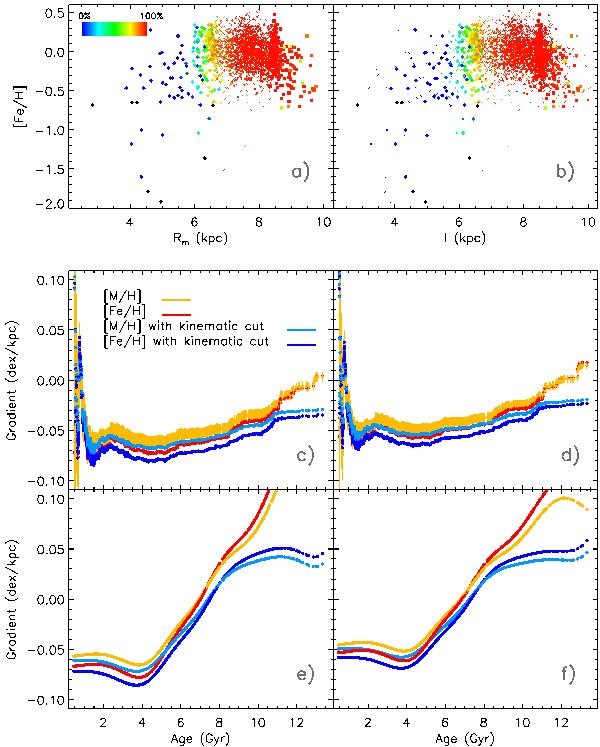Fig. 18

Panel a) and b) metallicity as function of orbital and guiding centre radius, respectively. The probability of a star to belong to the thin disc is represented by colour. Stars with halo membership higher than 50% are plotted in black. Filled diamonds and squares identify stars having VLSR < −40 km s-1 and >20 km s-1, respectively (cf. with Fig. 20). Panel c) cumulative metallicity gradient ([Fe/H] and [M/H] ) when including stars of increasingly older ages. Error bars are shown in one representative case. The gradient is computed using the mean orbital radius of stars as baseline. A kinematic cut to exclude halo stars (as described in the text) is also adopted for comparison. Panel d) same panel c), but using the guiding centre radius as baseline. Panel e) metallicity gradient centred at different ages, weighting all other stars with a Gaussian of width 1.5 Gyr and using the mean orbital radius as baseline. Panel f) same as panel e), but using the guiding centre radius. Only stars with well determined ages (Sect. 3) are used in all instances.
Current usage metrics show cumulative count of Article Views (full-text article views including HTML views, PDF and ePub downloads, according to the available data) and Abstracts Views on Vision4Press platform.
Data correspond to usage on the plateform after 2015. The current usage metrics is available 48-96 hours after online publication and is updated daily on week days.
Initial download of the metrics may take a while.


